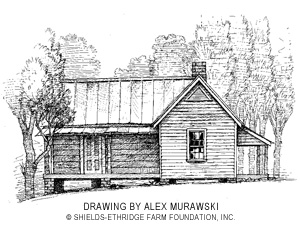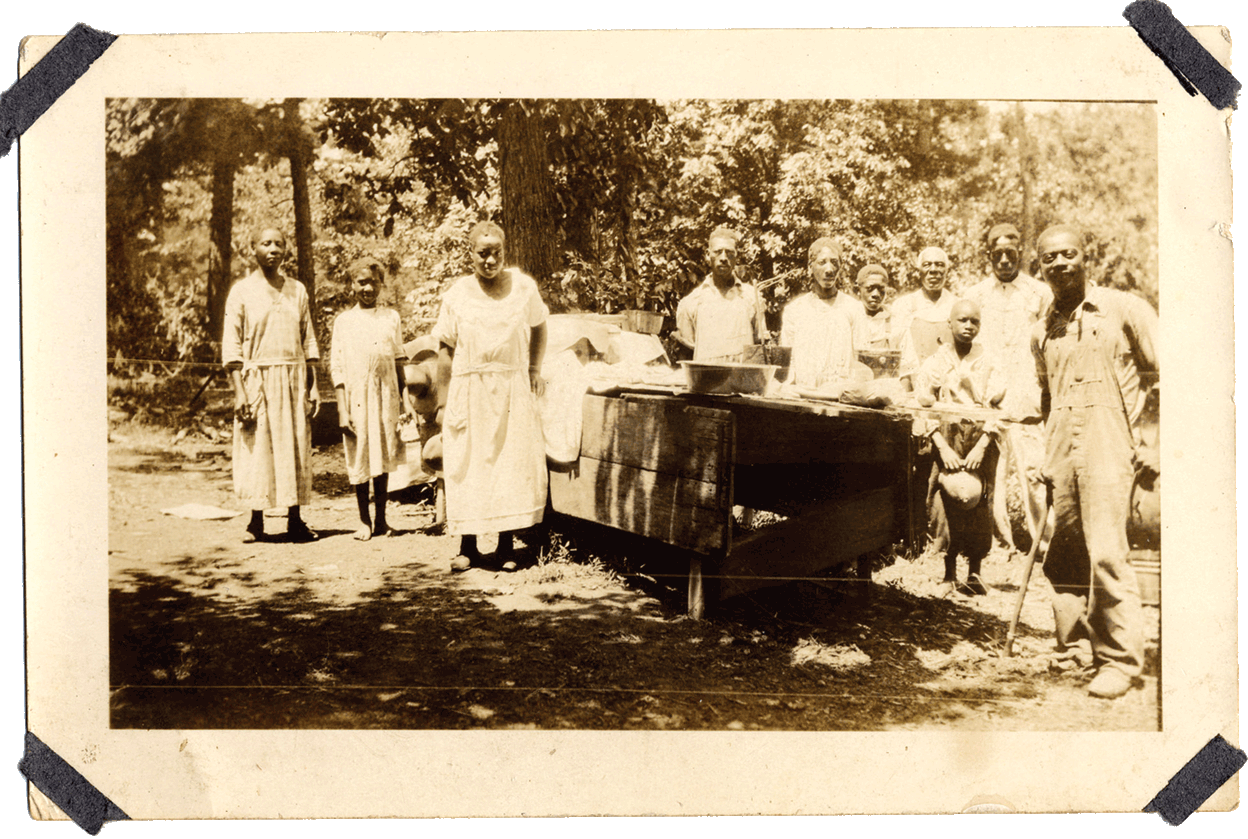 The chimney marks the site of Preacher Riley’s place. This was one of fourteen or fifteen tenant homes on the farm in the 1930s and ‘40s. It was probably the largest tenant house. Clearly, Riley who despite his nickname was not a preacher enjoyed a special status among the tenants. The L shaped building had four rooms and a front porch looking out onto a small swept yard. Grouped around the house site there are several outbuildings including a garage, a chicken house, a small barn, plus a well and a privy. Between his house and the gin Riley kept a large vegetable garden – this area is used for plowing demonstrations each Mule Day.
The chimney marks the site of Preacher Riley’s place. This was one of fourteen or fifteen tenant homes on the farm in the 1930s and ‘40s. It was probably the largest tenant house. Clearly, Riley who despite his nickname was not a preacher enjoyed a special status among the tenants. The L shaped building had four rooms and a front porch looking out onto a small swept yard. Grouped around the house site there are several outbuildings including a garage, a chicken house, a small barn, plus a well and a privy. Between his house and the gin Riley kept a large vegetable garden – this area is used for plowing demonstrations each Mule Day.

There were both black and white tenants on the farm, but most were African American. Tenant holdings were generally between 15 and 30 acres, probably insufficient to support a family but tenants also worked as wage hands for Mr. Ira. Joyce Ethridge remembered that in the 1940s hands were paid 75 cents for a day’s work.
In 2004, Preacher Riley’s Place was partially restored with funding provided from a Georgia Heritage Grant through the Georgia Department of Natural Resources/ Historic Preservation Division. The restoration involved foundation repairs, porch repairs, and window restoration. Preacher Riley’s Place was destroyed by fire set by vandals in 2010.
